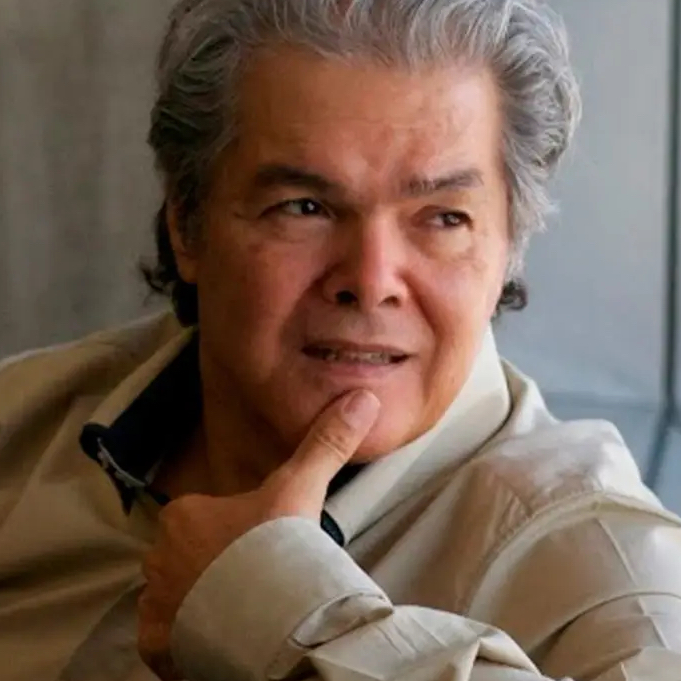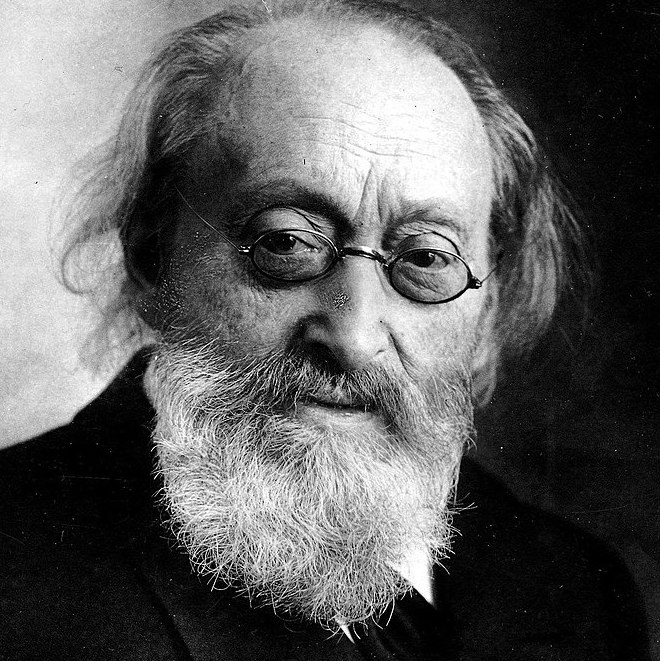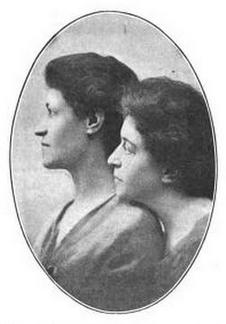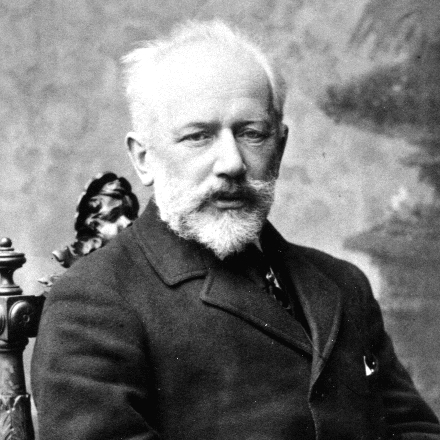Click here to
download a "printable" (large-print) version of these
notes.
Madison
Symphony Orchestra Program Notes
November
11-12-13, 2022
97th
Season / Subscription Program 3
J.
Michael Allsen
This program
opens with the lively Danzón No. 2
by
Mexican composer Arturo Márquez, based upon folk dance
from Veracruz. We
then welcome back Madison’s own Christina and Michelle
Naughton. The
Naughtons—twin sisters—were both soloists multiple times
in our youth concerts
when they were growing up in Madison, and they have been
working as a piano duo
since 2010. They first performed as a duo with the
Madison Symphony Orchestra
in 2012, playing Poulenc’s Concerto for
Two Pianos and they returned in 2016 for Mozart’s
two-piano concerto. Here
they play a late romantic work by Max Bruch. We close
with the emotional sixth
symphony of Tchaikovsky, the Russian master’s final
work.
 The
Danzón No. 2 of
Arturo
Márquez is his most popular work, and one of the most
frequently-performed pieces of contemporary Mexican
music for orchestra. This
is his colorful adaptation of a Mexican folk dance that
has Afro-Cuban roots.
The
Danzón No. 2 of
Arturo
Márquez is his most popular work, and one of the most
frequently-performed pieces of contemporary Mexican
music for orchestra. This
is his colorful adaptation of a Mexican folk dance that
has Afro-Cuban roots.
Arturo
Márquez
Born: December
20, 1950, Álamos, Mexico.
Danzón No. 2
- Composed: 1994.
- Premiere: Danzón No. 2
was commissioned by the National
Autonomous University of Mexico. The university’s
symphony orchestra played its
premiere in Mexico City in 1994.
- Previous MSO
Performances: This is our first performance of the
work.
- Duration: 10:00.
Background
Márquez was introduced to
music by his father, who
was a carpenter by day and a mariachi violinist by
night.
Arturo Márquez, one of Mexico’s most
successful contemporary
composers, was born in the state of Sonora. When he was
12 years old, his
family moved to a suburb of Los Angeles, where he
studied piano, violin, and
trombone. Márquez later recalled that “My adolescence was spent
listening to Javier Solis
[the famous Mexican singer/actor], sounds of mariachi,
the Beatles, Doors,
Carlos Santana and Chopin.” He later studied
at the Conservatory of Music
of Mexico, with the great French composer Jacques
Castérède in Paris, and at
the California Institute of the Arts. He is on the
faculty of the National
Autonomous University in Mexico City. Márquez frequently
uses Mexican and other
Latin folk influences in his works, and his best-known
series of works are the Danzónes he
began composing in the 1990s
for orchestra and other ensembles. The danzón
is a dance of Cuban origins, and early Cuban danzónes in the 19th century combined
intricate European-style figure
dancing with African-derived rhythms, and the form is in
the background of many
later Caribbean styles. The danzón
was particularly popular in the Mexican state of
Veracruz, where it remains one
of the primary forms of folkloric music. Like nearly all
Caribbean dance forms
it is first and foremost a rhythm: in this case, the
insistent five-beat
pattern known as clave:
the same
rhythm that provides the “heartbeat’ of rumba, son, and
salsa music.
What You’ll Hear
The clave rhythm that underlies this work is a
legacy of the African
Diaspora: derived from West African drum music, it was
brought to the Caribbean
by enslaved Africans.
The clave appears
in the opening bars of Danzón No.2,
supporting a sinuous solo for the clarinet, eventually
joined by the oboe. The
intensity ratchets up as more instruments enter, but the
clave is always calmly in the background.
There is a brief hushed
interlude for piano and solo violin that recalls the
old-fashioned sound of
19th-century danzónes,
and this is
given a more lush treatment by the strings. There is a
sudden break and a new
character, more intense and brassy, though the tempo and
clave rhythm stay immovable until the
brash ending.
 This
late work by Bruch was not heard in its original form
until over 60
years after was written. And there’s an interesting story
behind that...
This
late work by Bruch was not heard in its original form
until over 60
years after was written. And there’s an interesting story
behind that...
Max Bruch
Born:
January 6, 1838, Cologne,
Germany.
Died:
October 2, 1920, Friedenau (near
Berlin), Germany.
Concerto for Two
Pianos and Orchestra in A-flat minor, Op. 88a
- Composed: 1912.
-
Premiere: The
work was performed, in a simplified version, by sisters
Rose and Otilie Sutro,
with the Philadephia Orchestra, directed by Leopold
Stokowski, on December 29,
1916. Bruch’s original version was finally recorded in
1973, by pianists Nathan
Twining, and Martin Berkovsky, who performed with the
London Symphony Orchestra
under Antal Dorati.
-
Previous
MSO Performances: This is our first
performance of the work.
-
Duration: 22:00.
Background
Bruch was one
of Germany’s leading composition teachers, and his
students included Dr. Sigfrid
Prager, who would become first conductor of the Madison
Civic Symphony
(predecessor of today’s MSO) in 1926. Prager studied with
Bruch in Berlin in
the years prior to World War I.
Max
Bruch
is known today primarily for two solo violin works,
the Violin Concerto No. 1 in G minor and
the Scottish Fantasy, and for his Kol
Nidrei for cello and orchestra. However, Bruch
was a tremendously
successful composer in his day, with a catalog of
nearly a hundred works that
included three operas, three symphonies, five
concertos, dozens of other
orchestral pieces, sacred and secular choral works,
art songs, and chamber
music. He was also a well-regarded conductor and one
of the most sought-after composition
teachers in Europe: Ottorino Respighi and Ralph
Vaughan Williams were among his
more famous pupils. In 1912, when he composed his Concerto for Two Pianos, Bruch was in
his 70s, and had retired
after over 20 years teaching composition at Berlin’s
famed Hochschule (Conservatory)
für Musik. He had actually declared to a friend when
he reached his 70th
birthday in 1908 that he was through with composing.
In fact, he continued to
write music almost until his death at age 82.
Rose and Otilie Sutro
in 1917
 The Concerto for Two Pianos has a
fascinating—and rather twisted—story.
In 1911, Bruch heard a performance of his 1861 Fantasy for Two Pianos by the American
duo-pianists Rose and Otilie
Sutro. The Sutro sisters were then touring Europe, and
had known him in the
1890s when they were students at the Berlin
Hochschule. Bruch, flattered by
their request that he write a two-piano concerto for
them, promptly agreed, and
in 1912, he sent the autograph score to the sisters in
the United States. Bruch’s
concerto was adapted from a
suite for organ and orchestra he had been working on
since 1904. In 1916, the
Sutros performed the “premiere” of the Concerto
for Two Pianos in Philadephia, but unbeknownst
to Bruch, what they played
was a dramatically simplified version. The sisters had
the gall to copyright their
arrangement, and they
continued to tinker with it for the next few decades.
Bruch himself never heard
the work performed, but on the strength of the
supposed premiere, he later
agreed to send the autograph of his by-then famous Violin Concerto No. 1 to the Sutros, who
promised to arrange for
publication in the United States. Not only did they
arrange for Bruch to be
paid in nearly worthless German Marks (their value
destroyed by postwar
inflation), they never returned the manuscript and
later sold it for a hefty
sum in 1949. The original version of Bruch’s Concerto for Two Pianos remained
completely unknown until after
Otilie’s death in 1970 (Rose had died in 1957), when
her papers were auctioned.
Pianist Nathan Twining acquired both the Sutros’
version and Bruch’s original
autograph manuscript. Bruch’s original was finally
performed—over 60 years
after he had composed it—in a 1973 recording by
Twining and pianist Martin
Berkovsky. The concerto was published in 1977 as
Bruch’s Op. 88a.
The Concerto for Two Pianos has a
fascinating—and rather twisted—story.
In 1911, Bruch heard a performance of his 1861 Fantasy for Two Pianos by the American
duo-pianists Rose and Otilie
Sutro. The Sutro sisters were then touring Europe, and
had known him in the
1890s when they were students at the Berlin
Hochschule. Bruch, flattered by
their request that he write a two-piano concerto for
them, promptly agreed, and
in 1912, he sent the autograph score to the sisters in
the United States. Bruch’s
concerto was adapted from a
suite for organ and orchestra he had been working on
since 1904. In 1916, the
Sutros performed the “premiere” of the Concerto
for Two Pianos in Philadephia, but unbeknownst
to Bruch, what they played
was a dramatically simplified version. The sisters had
the gall to copyright their
arrangement, and they
continued to tinker with it for the next few decades.
Bruch himself never heard
the work performed, but on the strength of the
supposed premiere, he later
agreed to send the autograph of his by-then famous Violin Concerto No. 1 to the Sutros, who
promised to arrange for
publication in the United States. Not only did they
arrange for Bruch to be
paid in nearly worthless German Marks (their value
destroyed by postwar
inflation), they never returned the manuscript and
later sold it for a hefty
sum in 1949. The original version of Bruch’s Concerto for Two Pianos remained
completely unknown until after
Otilie’s death in 1970 (Rose had died in 1957), when
her papers were auctioned.
Pianist Nathan Twining acquired both the Sutros’
version and Bruch’s original
autograph manuscript. Bruch’s original was finally
performed—over 60 years
after he had composed it—in a 1973 recording by
Twining and pianist Martin
Berkovsky. The concerto was published in 1977 as
Bruch’s Op. 88a.
What You’ll Hear
This romantic concerto is
laid out in four
movements:
• It opens
with a grand fanfare, and an
extended fugue, both based upon themes Bruch heard on
the Italian island of
Capri.
• A lively
scherzo-style movement with a slow
introduction.
• A lyrical
slow movement.
• A grand
finale, based on the main ideas from
the opening movement.
The
concerto’s origins as a suite for organ and orchestra
may have
been responsible for
its unusual four-movement form. The opening movement (Andante sostenuto) begins with a stern
fanfare, that, according to Bruch,
was derived from a Good Friday procession he heard
while recovering from an
illness on the resort island of Capri in 1904. Bruch
remembered that, leading
the procession
“was
a
messenger of
sadness with a large tuba, on which he played a kind
of signal. It was not bad:
one could make a good funeral march out of it! Next
came several large flowered
crosses, one carried by a hermit from Mount Tiberio.
Then 200 children dressed
in white and carrying large burning candles, each of
them also holding a small
black cross. They saying in unison a kind of
lamentation...”
The
children’s lament, which he transcribed, here became
the subject of a solemn
fugue. The fanfare eventually returns
with
great ferocity, before a calm closing episode from the
pianos.
The second
movement (Andante
con moto) begins
in a
quiet, pastoral mood, an
episode decorated by the pianos, before launching into
lively scherzo-style
music (Allegro
molto vivace). pianos
and orchestra develop a series of new ideas before
returning to the scherzo
theme and a rousing ending. The slow movement (Adagio non troppo) begins with a quiet
introduction, led by solo
horn, before the pianos introduce a flowing main
theme. This eventually grows
into a passionate statement for orchestra. In the
remainder of the movement,
this idea is developed in an unhurried way, rising to
one last grand peak
before a quiet conclusion.
The closing movement (Andante)
begins with a return of the opening fanfare, which is
developed expansively,
before the tempo suddenly quickens (Allegro).
The movement’s main theme is a fierce idea derived
from the fanfare, though
Bruch also introduces a calmer second idea: a version
of the children’s lament
of the opening movement. The short development focuses
on the fanfare, and
after a recapitulation of these ideas, concerto ends
with a fiery coda
dominated by the fanfare.
 Tchaikovsky’s
very last work, premiered
just over a week before his death, is profoundly sad
and moving, but also a
work with several brilliantly innovative moments.
Tchaikovsky’s
very last work, premiered
just over a week before his death, is profoundly sad
and moving, but also a
work with several brilliantly innovative moments.
Peter Ilyich Tchaikovsky
Born: May 7,
1840, Votkinsk, Russia.
Died:
November 6,
1893, St. Petersburg, Russia.
Symphony No. 6
in B minor, Op. 74
(“Pathétique”)
-
Composed: Between February and August 1893.
-
Premiere: The Symphony No. 6 was first played in St. Petersburg on October 28, 1893, with Tchaikovsky conducting.
-
Previous MSO Performances: 1945, 1956, 1963, 1971, 1982, 1999, and 2017.
-
Duration: 45:00.
“You can’t
imagine what bliss I feel, being convinced that my
time is not yet passed and I
can still work. Perhaps, of course, I’m mistaken,
but I don’t think so.”
- Tchaikovsky (to his nephew)
Background
Tchaikovsky
was a composer who wore his
heart on his sleeve...and who revealed his heart in
his music. The tragic Symphony No. 6
was a reflection of his
state of mind in the last year of his life.
Tchaikovsky’s
late symphonies are
autobiography of the most revealing kind. This was a
man who felt and suffered
deeply, and those feelings—fear, guilt, insecurity,
and occasionally joy—came
though most clearly in these works. The idea of Fate
figures prominently in the
programs of the fourth and fifth symphonies. The
fourth (1877) seems to be a
titanic battle with Fate, most likely occasioned by
his feelings of guilt and
inadequacy after his short-lived marriage and the
increasing realization of his
own homosexuality. The fifth (1888) is also a
symphony about Fate, but here the
relationship is more comfortable, or at least
resigned. A decade after the
fourth, Tchaikovsky had probably come to terms with
his homosexuality, and
although he still felt guilt pangs, his acceptance
was accompanied by a
deepening religious conviction and renewed
confidence. A clear sense of this
self-assurance comes through in the symphony’s
triumphant finale.
None of
the late symphonies is
surrounded by more mystique than the sixth, however.
This is his last major
work, and it was written after a protracted
depression. The optimism of the
late 1880s collapsed when his longtime patroness and
confidante Nadejda von
Meck severed their relationship in 1890. Though he
was no longer financially
dependent on her, his correspondence with von Meck
had obviously been an
emotional support—she had been the one person to
whom he could open his heart,
even though they never spoke in person. Even
artistic success and international
fame was not enough. On a fabulously successful
American tour in 1891, he wrote
in his diary about feeling old and washed
out: “I feel that something within
me has gone to pieces.” By the beginning of 1893, he
had hit rock bottom,
writing to his nephew Vladimir Davidov on February 9
that: “What I need is to
believe in myself again, for my faith has been
greatly undermined. It seems to
me that my role is over.” But within two weeks, he
reported back excitedly to
the same nephew that he was composing “furiously.”
By August, when the Symphony No.6
was nearly complete, he
wrote again, calling it “the best, and certainly the
most open-hearted of my
works.” The supreme irony of this work is that, only
nine days after he
conducted its successful premiere in St. Petersburg,
Tchaikovsky was dead. The
old story about his death from cholera seems to be a
fabrication, covering up
what was almost certainly suicide. The precise
details of his death remain
a mystery, but one story that came to light in 1966
connects the death to a
romantic relationship between the composer and the
nephew of a Russian noble. Such
things were kept out of the public eye, but
Tchaikovsky was supposedly
convicted by a “court of honor” comprised of his
noble peers, and told to kill
himself to avoid embarrassment for all concerned.
Given the
biographical
circumstances of this symphony, Tchaikovsky’s
intended meaning is significant
in how we hear it. Its pessimistic tone, and
elements like the quotation of a
chant from the Orthodox service for the dead,
suggest that death was probably
on his mind. This is clearly a symphony with a
message—it was billed as A Program
Symphony at its first performance,
and in a letter to his nephew, he described it as:
“a work with a program, but
a program of a kind which remains an enigma to
all—let them guess it who can.”
Modeste Tchaikovsky, who composed a sort of
biographical program for the Symphony No.6
after his brother’s death,
maintained that the secret died with the composer.
However, some clue of his
intentions may lie in a brief note found among the
sketches for his Nutcracker
ballet, written a year
earlier:
“Following
is the plan for a symphony LIFE! First movement—all
impulse, confidence, thirst
for activity. Must be short (Finale death—result of
collapse). Second movement
love; third movement disappointment; fourth ends
with a dying away (also
short).”
It is
hard to escape the
conclusion that the Symphony No.6
is
autobiographical, the work of a deeply sad man. The
title was not Tchaikovsky’s
own: Pathétique,
not simply
“pathetic” as usually understood, but Patetichesky
in the original Russian implying poignancy and deep
sorrow. His brother Modeste
suggested the title the day after the premiere as a
replacement for the
composer’s own enigmatic Program
Symphony,
and Tchaikovsky appended it when he mailed the score
to his publisher
Jurgenson. The day after he mailed the score, he
wrote a second letter to
Jurgenson rejecting the title, but he was dead a
week later and the publisher
kept Modeste’s title, which has remained with the
work ever since.
What You’ll Hear
The symphony
is in four movements:
• A
large opening movement that
experiments with the conventional elements of the
form.
• A
lilting waltz...in 5/4!
• A
grand march.
• A
deeply sad and tragic
concluding movement.
In his
letters, Tchaikovsky
promised “much innovation of form” in the Symphony
No.6, and the opening movement certainly lives
up to this. Dispensing with
the usual conventions, he presents three related
ideas in three different
tempos: first a doleful bassoon melody, which gives
way to a faster version of
the same idea in the violas. A descending line at
the end of this section is
transformed into the lush third theme in the
strings. After an ascending answer
in the woodwinds, the theme enters again in fuller
form. The music dies
away—literally: never one for understatement,
Tchaikovsky writes the seemingly
impossible dynamic marking pppppp
(pianisisisisissimo!)
at the close of
the exposition. The development begins with a
crashing chord from the full
orchestra (merely ff — ffff
comes
later...). After a fierce fugato, the
bassoons and low brass solemnly intone a chant from
the Russian Orthodox mass
for the dead (“With your saints, O Christ, may the
soul of the departed rest in
peace”). There is no regular recapitulation, but
instead a continuation of the
furious motion of the development, following on the
heels of this chant. When
it reappears, the second theme is underlaid with a
nervous accompaniment
figure. The movement fades away with quiet woodwind
statements above descending
pizzicato notes from the strings.
Innovation
continues in the second
movement (Allegro
con grazia), a
waltz set in 5/4. This meter was almost unheard of
in orchestral music at the
time, and can often sound awkward and off-balanced.
Tchaikovsky’s melodies,
however, flow so naturally that this odd metrical
arrangement is scarcely
noticeable. The movement is cast as an alternation
between the gentle, lilting
“waltz” and a more pensive trio.
The third
movement (Allegro
molto vivace) is a march, but
this is not clear for quite a while. Quick triplet
figures are tossed off
between strings and woodwinds as tiny fragments of a
march theme gradually
emerge. When the march itself finally appears, some
70 bars into the movement,
it is quietly stated by the clarinets, and then
again by the strings. There is
a brief crescendo, but the dynamic backs off again
and the strings and
woodwinds introduce a countertheme. The march theme
begins again, still under
tight control, and there is a lengthy section where
tension builds to the
breaking point before the seemingly inevitable
statement by full orchestra. The
movement closes triumphantly with a descending line
in the brass and a triplet
flourish.
After the
noisy bombast of the
march, the tragic character of the finale (Adagio
lamentoso) comes as a complete surprise. The
main theme is given
immediately by the strings, and then again with
slightly augmented
orchestration, rounded off by a melancholy bassoon
solo. The second theme moves
to a somewhat brighter major key, and the mood
intensifies until an ominous
strike of the gong. The music builds to one more
peak before silenced again by
the gong and a dark trombone and tuba chorale. As if
exhausted, the movement
quickly dies away to nothingness.
________
program
notes ©2022 by J.
Michael Allsen